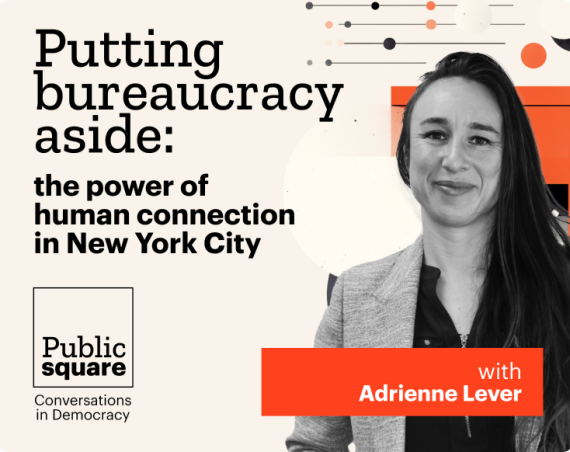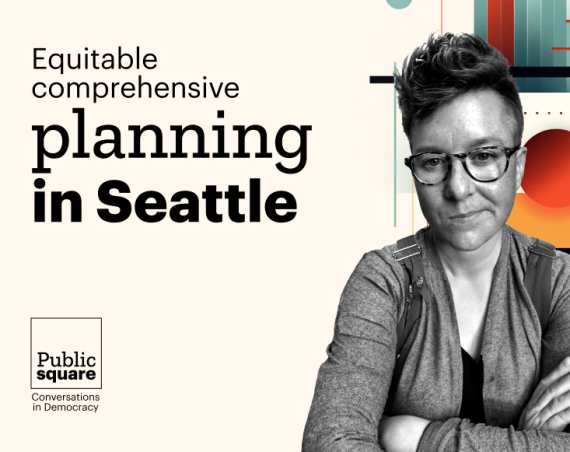As you may have understood by now if you are a regular reader of the CitizenLab blog, enhancing your citizen engagement processes by adding a digital component is crucial. It is the answer to most of your questions regarding civic engagement: how do I reach more people? How do I make my consultation more inclusive? How do I make it efficient? By taking your citizen participation online. But then, another question arises: which solution will best fit your needs?
We have listed 7 things you should look for in your future online participation tool:

Want to learn more about each of them? Click on the one you want to read about below.
In a good online citizen platform, you should find:
- An easy and intuitive interface
- The features you need, nothing less, nothing more
- A system to manage participation in time
- An online platform which is flexible
- A solution that leaves you owner of the data
- A transparent way to give feedback to the citizens
- A great data visualisation system
1. An easy and intuitive interface

One of the main goals of taking your citizen participation online, as previously mentioned, is to make it more inclusive. Indeed, it suppresses the discrimination of parts of the population due to their location, availability, etc. which can be encountered in traditional participation efforts. However, the challenge when going digital is different: with this tool you should not deter people who are less at ease with technology from participating. That is why your online participation tool should be as simple as possible to use for your citizens.
The wording should speak to the man in the street: the platform should avoid political or technical jargon which citizens may not understand. The user interface should be as intuitive as possible, in order to engage non-digital natives as well. It should also avoid any extra clicks, because another advantage of digital engagement is that it can be fast – so pick a tool that can make it fast. Usually, these type of tools are conceived citizen-centric, which means designers have studied the behaviour of citizens beforehand to offer a tool which they will naturally grasp.
Moreover, citizens are not the only ones who could be reluctant to use a complex tool. Internally, city officials or employees must also be able to understand how it works, no matter their digital skills.
2. The features you need, nothing less, nothing more
It is always tempting to go towards fancy solutions which offer a wide range of possibilities, even though you might not think of a use case right now. There will always be someone in your team who will wonder “what if we need it later?”.
It is a valid approach to have when you are about to invest in such a solution. However, it may serve your purpose badly: as explained above, you and your colleagues may get confused by a great number of features, especially if you know you will only need a couple. Your objective is to have a straightforward solution where you don’t have to look for what you need among many other things that may seem irrelevant to you.
The key to avoid this situation is to think beforehand about what you want to get out of this citizen participation process, and then think of the functionalities you need to achieve this. Our engagement specialists came up with a great framework to organise your thoughts: the e-participation canvas.
3. A system to manage participation in time
The conversation you want to start with your citizens is not as simple as a chitchat in the corridor that you would take online. This is what social media is for. Your citizen consultation is a dialogue framed by deadlines and requirements shaped by the political agenda. The online participation tool you pick should allow you to have a structured yet open exchange with your citizens.

An efficient system for this is a timeline of each steps of the consultation: it allows transparency regarding the decision-making process, as well as the definition of periods of time when the citizens can discuss, vote, and share ideas, according to your agenda. Plus, it is an efficient way to sync your online participation tool to your offline efforts, like town hall meetings, etc.
4. An online platform which is flexible
It is important that you can design your citizen participation process how you want to: you should be able to choose who can get involved and when, in order to match the political agenda, as mentioned above, but also as to get exactly the input you need. If you have a consultation project in mind, you should be able to configure your participation tool to match it. Requirements can be varied here, from what you ask the citizens, to the way you ask them.
Make sure you have enough freedom to really make this participation process your own. Examples of useful features for this may be custom fields, a custom design of the platform, or the opportunity to choose between various consultation methods (surveys, polls, participatory budgeting, open idea box, etc.).
5. A solution that leaves you owner of the data
These days, citizens need to trust their institutions, which can seem to be a challenging task while launching a digital platform and collecting some information about them through that mean.
Citizens are expecting two things: accountability and transparency. Picking an online participation tool which makes you owner of the data collected on the platform is the right way to do so. Indeed, you should be able to guarantee that citizen data is not used in any other context than the consultation, and by no third party.
6. A transparent way to give feedback to the citizens
Speaking of transparency and accountability, administrations find it at times tricky to provide feedback while consulting their citizens.
It can quickly seem daunting due to volume for instance. We get it, you will not have time to comment back to every citizen that will contribute on your platform. Still, you should at least make sure they know what is being done with their input. For example, an idea status management system can help you and your colleagues in each department to give a quick answer on what’s going on with each citizen proposal: is it rejected or will it be implemented? Find a tool that makes it easy to let the citizens know.
7. A great data visualisation system
One of the perks of using an online participation tool is to save time. In the implementation, but also in the processing of citizen input. The right tool will help you process data quicker by showing you instantly what you need to know to make your decisions. After all, this is what citizen participation is all about. That’s why this point is essential when looking into online participation solutions.
Make sure you can visualise at a glance what is happening on the platform: some graphs or maps usually help. A dashboard with ready-made analysis can also assist you in quickly understand the citizens’ needs. And if you want to take it one step further, make sure you can export raw data to process the information your own way.
What else are you looking for in your online citizen participation tool? Let us know in the comments!






